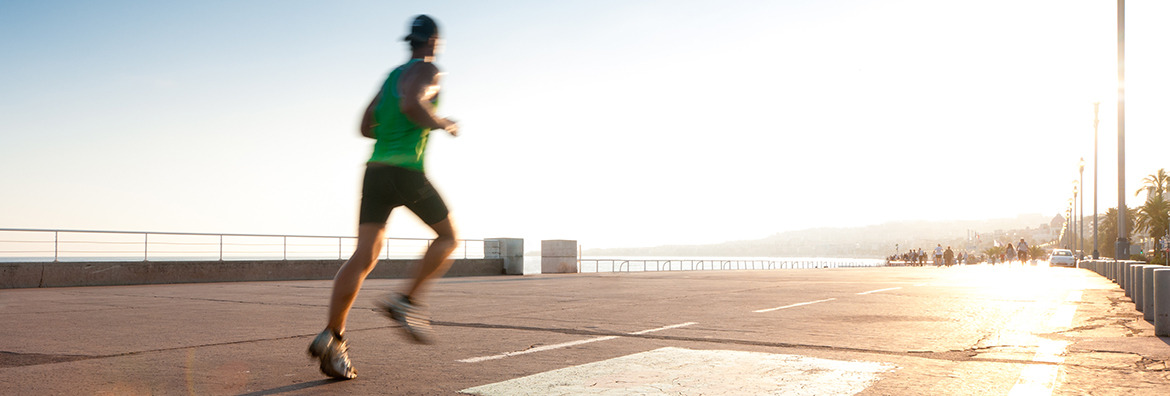
Run Analysis
In this Resource:
- Interactive: Google+ Hangout session with Nicole Haas, PT, DPT, OCS
- Video: PT TV Episode 25: Running Analysis
- Article: What can Run Analysis Do For Me?
- Other Resource Materials
Interactive: Google+ Hangout session with Nicole Haas, PT, DPT, OCS
Click on the link below to watch the Google+ hangout with Nicole Haas, PT, DPT, OCS, Therapydia Boulder Clinic Director and national run expert, who led a panel of professionals across the health community in a discussion about common running issues and analysis.
Interactive: Google+ Hangout session with Nicole Haas, PT, DPT, OCS
Video: PT TV Episode 25: Running Analysis
Article: What can Run Analysis Do For Me?
By Nicole Haas, PT, DPT, OCS
Any runner who has tried to search the Internet for the solution to an injury, or for tactics to prevent an injury, knows that an abundance of information exists. The Internet is rife with recommendations on which exercises you should do, which running pattern is correct, and which shoe you should wear. Problem solved… right? One of the most challenging issues with preventing injury for runners is sorting through what evidence is based on scientific research, versus what is simply a convincing personal anecdote. Even once you are able to sort through the information, trying to determine what recommendations actually apply to you becomes the next hurdle.
There are many components to running without injury while ensuring your body has the tools to run effectively and efficiently. Proper strength, mobility, and balance all play a part as your foot hits the ground, and then pushes back off again when running. The dynamic nature of these components is a key reason a run analysis can determine whether your body’s tools are able to meet your body’s needs while running.
As a physical therapist, I am often asked which running techniques are best and which are correlated with injuries. Many runners struggle with injuries – or hope to prevent them. They’ve read the latest articles and often trade recommendations with other runners. They’re seeking advice and hope that changing their shoes or the way their foot strikes the ground might get rid of, or prevent, that aching hip or knee or ankle. They also hope these changes can help them run faster and longer, too.
My advice, as someone who has spent time in the biomechanical research lab and who has evaluated runners for over a decade, always comes down to “it depends.” It depends on each runner’s alignment, the strength of their muscle groups, their mobility of moving parts used in running, their balance while in motion, their choice in footwear (or foregoing shoes altogether)… and it depends on what happens when they put it altogether and start placing one foot in front of another while running. Undergoing a run analysis is key to determining what challenges a runner’s body might have. It is a tool that can determine whether a runner is predisposed to injuries such as knee pain, hip pain, stress fractures, or many of the challenges that runners often face.
Running analysis is a systematic method for determining whether or not your movement patterns are correlated with known evidence for injury, and whether you demonstrate any mechanics that predispose you to injury. Run analysis and biomechanical assessments can determine whether a runner’s choice of technique is compatible with the ability to apply it. It can determine the strengths, weaknesses, and mechanical challenges involved in allowing running to be more efficient, more enjoyable, and most importantly, injury and pain-free.
Other Resource Materials
Common Running Injuries (and How to Fix Them)
Ferber R, Noehren B, Hamill J, Davis I. Competitive female runners with a history of iliotibial band syndrome demonstrate atypical hip and knee kinematics. J Orthop Sports Phys Ther. 2010;40(2):52-‐58.
Heiderscheit B, Chumanov E, Michalski M, Wille C, Ryan M. Effects of step rate manipulation on joint mechanics during running. Med Sci Sports Exerc. 2011;43(2):296-‐302.
Hoffman MD, Krishnan E (2014) Health and Exercise-‐Related Medical Issues among 1,212 Ultramarathon Runners: Baseline Findings from the Ultrarunners Longitudinal TRAcking (ULTRA) Study. PLoS ONE. 2014; 9(1): e83867. Milner CE, Ferber R, Pollard CD, Hamill J, Davis IS. Biomechanical factors associated with tibial stress fracture in female runners. Med Sci Sports Exerc. 2006;38:323-‐328.